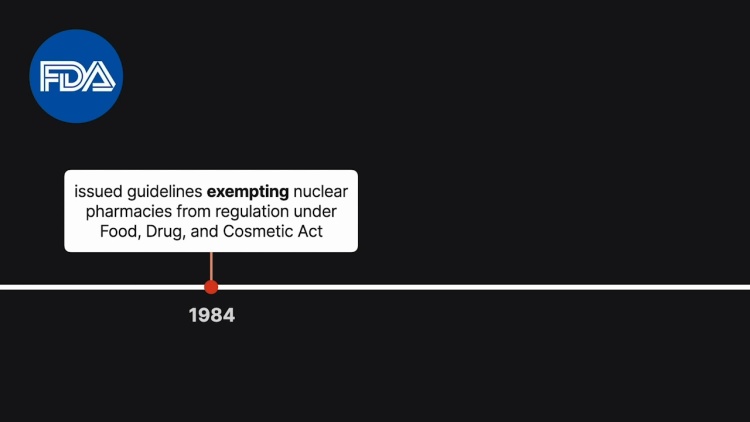Syncor International Corp. v. Shalala
United States Court of Appeals for the District of Columbia Circuit
127 F.3d 90 (1997)

- Written by Eric Cervone, LLM
Facts
In 1995, the federal Food and Drug Administration (FDA) (defendant) issued a notice concerning positron emission tomography technology (PET) and PET-manufactured pharmaceutical drugs. The Administrative Procedure Act’s (APA’s), 5 U.S.C. § 551 et seq., notice and comment procedures require a federal agency both to notify the public of the agency’s intention and to give the public an opportunity to comment on the agency’s proposal before issuing any substantive rules or policies. However, the APA’s notice and comment procedures do not apply to an agency’s nonsubstantive statements. The FDA characterized the 1995 PET notice as a nonsubstantive guidance or policy statement. Accordingly, it did not provide any notice and comment before issuing the 1995 notice. The 1995 notice stated that it superseded a 1984 FDA guideline concerning PET drugs. The 1984 guideline explicitly stated that the Federal Food, Drugs, and Cosmetics Act (FFDCA), 21 U.S.C. § 301 et seq., did not apply to PET drugs. However, the 1995 notice reversed that position and explicitly stated that PET drugs would now need to comply with the FFDCA. Syncor International Corporation (Syncor) (plaintiff) sued the FDA, contending that the FDA’s 1995 notice was a substantive rule, and, therefore, the APA’s notice and comment requirements should have been followed before the FDA issued it. The district court found that the 1995 notice was a nonsubstantive interpretative rule, and, therefore, notice and comment procedures were not required before issuing it. Syncor appealed to the United States Court of Appeals for the District of Columbia Circuit.
Rule of Law
Issue
Holding and Reasoning (Silberman, J.)
What to do next…
Here's why 899,000 law students have relied on our case briefs:
- Written by law professors and practitioners, not other law students. 47,000 briefs, keyed to 994 casebooks. Top-notch customer support.
- The right amount of information, includes the facts, issues, rule of law, holding and reasoning, and any concurrences and dissents.
- Access in your classes, works on your mobile and tablet. Massive library of related video lessons and high quality multiple-choice questions.
- Easy to use, uniform format for every case brief. Written in plain English, not in legalese. Our briefs summarize and simplify; they don’t just repeat the court’s language.





